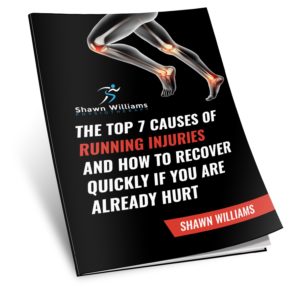10 Things to Remember When Preparing for Winter Running
1. Warm-up inside: It is always important to do a dynamic warm-up before a run. During winter it is best to do your warm-up indoors if possible, as it will help you truly get warm before you brave the cold outside. Try walking up and down the stairs or doing butt kicks and high knees before you leave the house.
2. Aim to run when it is light out: To keep yourself safe you need to ensure that others can see you, and you can see any potential obstacles, like ice patches. The ideal way to do this is to run when it is light outside, though this is not always possible during the short winter days. If you cannot run when the sun is up, wear a head light and reflective gear to ensure your safety.
3. Be flexible about your training: While running outside is a great way to keep up your training in the winter, you cannot rely on being able to go as frequently as you would in the summer months. Some days the conditions will be too poor to run, be it too cold, snowy, and/or icy. For this reason, it is good to have contingency plans in place. You can set up ways to exercise at home (e.g. find a body weight workout) or plan to go to the gym when the weather is not cooperating.
4. Plan your route in advance: It is helpful to plan your running route prior to your run, taking into account which route will have the best conditions. Get to know which areas around you are prone to black ice, which areas get salted or sanded regularly, and which roads or paths get ploughed.
5. Dress appropriately: Remember that you will warm up as you run, and you do not want to sweat so much that you catch a chill. Therefore, you can dress as though it is a few degrees warmer than it actually is. Though do remember that you lose heat through your extremities; wearing warm gloves, thick moisture wicking socks, and a hat can help minimize heat loss.
6. Cool down in your house and change immediately: You will begin losing heat quite quickly once you are done running. For this reason, it is best to perform your cool down in a warmer environment to avoid becoming chilled. You should also change out of your running clothes immediately to prevent the damp and cold from seeping in.
7. Set winter-specific goals: The more challenging conditions will make your run more difficult, or it may become too cold to stay outside as long as you would like. Adjusting your training duration and distance to accommodate the road and weather conditions is recommended.
8. It is still important to hydrate: Though you may not feel like you are sweating as much during the winter as you do in the summer, it is important to replenish any fluids you have lost. Remember to hydrate before, during and after a workout.
9. Pick appropriate shoes: Minimizing the mesh in your winter running shoes will help keep your feet warm and dry. Adding ice grips to your existing running shoes, or purchasing a winter-specific pair with studs will help keep you on your feet. Minimalist shoes will allow you to feel the ground easier and react to icy surfaces. Consultation with myself can teach you how to safely transition into minimalist shoes.
10. Account for the wind: The winter wind will feel fierce coming at you towards the end of your run. If you are running in a city, you can avoid the wind by staying close to tall structures. If you do not have buildings to protect you, plan your run so that the wind is at your back in the latter half of your run.




